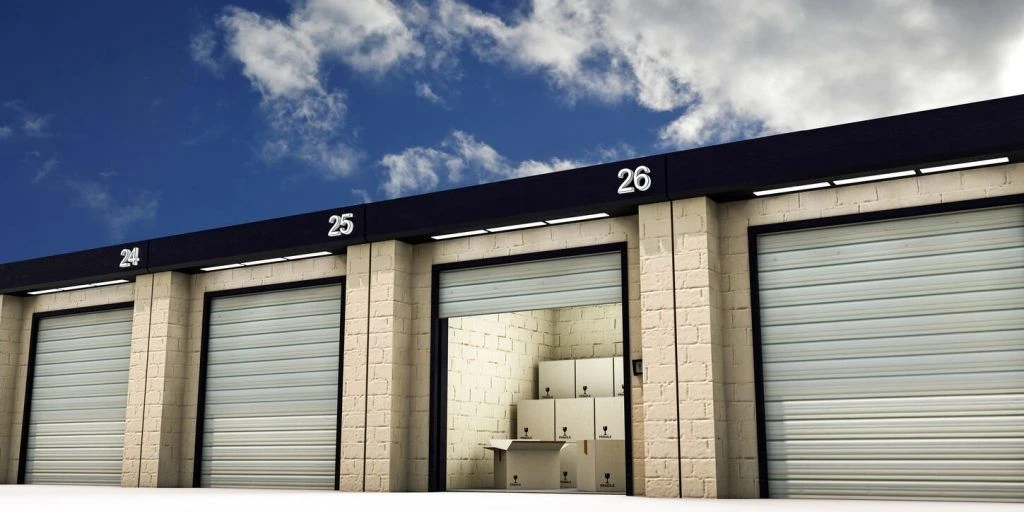
Moving House

Moving Abroad

Container Shipping

Services

Find a Mover


Whether you’re moving house or just trying to make a little more space, you might be considering using house storage solutions. Off-site storage will give you the flexibility you need when moving, rather than having your house cluttered with boxes. To help you through the process of moving storage, we put together this article, which covers all your moving and storage needs. These tips are all you need to ensure storing furniture between moves is as easy as a, b, c 😉.
Moving and storage often go hand in hand, however, your removal costs and storage costs will be charged separately (unless your removal company offers storage). That does still beg the question of how much does household storage costs?
Well, that’s complicated and will depend on various factors, but the average cost is around £24/ft2 a week according to data from the Self-Storage Association UK (SSA UK). Of course, this is an average and the costs will differ depending on location with cities coming at a premium due to space limitations. House storage units cost around £33/ft2 a week in London!
Even though providing exact figures is a challenge, to say the least, the table below indicates average storing and moving costs across the UK per month:
| Storage Size (ft2) | Central London | North England | South England |
| 50 | £140 | £75 | £100 |
| 75 | £200 | £100 | £145 |
| 100 | £275 | £140 | £195 |
| 200 | £550 | £285 | £385 |
If you need some help with understanding the right house storage unit size for you, just keep reading, it’s in the section below!
Unless you happen to be a trained surveyor, it’s likely that you have no idea how large the household storage unit you need should be, and what good is it knowing the cost of storage if you don’t know how much space you’ll need. While there’s no easy answer, we have some tools that will help!
First, the table below shows roughly how the volume of different trucks used for moving houses and the approximate unit size that corresponds to. Yes, removal companies and storage companies prefer different units and it’s a pain.
| Transport Vehicle | Truck Volume | Approx. Unit Size |
| LWB transit van | 340 ft3 | 50 square feet |
| Luton van | 530 ft3 | 75 square feet |
| 7.5 tonne Luton van | 1,200 ft3 | 125 square feet |
Second, our furniture volume calculator will help you calculate the volume of the contents that you wish to put into storage while moving. It’s a pretty handy tool and should give you a pretty good estimate to make an informed decision.
Phew, that was a lot of maths for us, and we really hope it helped you. However, there are some other things to consider that make the above only an approximation. That would be the shape of the house storage units. So, look out for slanted roofs or low ceilings that will cut into your storage space!
When it comes to putting furniture in storage, there are a few big decisions to make: self-storage or storage with moving companies, the size of the house storage unit, and inside versus outside storage. With each decision, you’ll need to think about what will work best for you, there’s no one size fits all solution.
It’s exactly what it says on the tin! This option involves putting furniture into storage in a company’s warehouse, which you can access within opening hours. Self-storage is usually relatively cheap, safe, and convenient, although there is normally a minimum rental period of one month.
Not sure where to start with your moving and storage? If opting for self-storage, some of the following websites will be of use to you:
If you like the idea of your removal and storage being combined for convenience, then ask your removal company if they can store your furniture as part of your move and deliver them to your new home when it’s ready. Sounds dreamy! Just be aware that this may be a little more expensive, but the convenience is worth it in the end. Furthermore, not all removal companies offer moving and storage, so remember to ask.
If you haven’t found a removal company to help you with your house removal, consider checking our list of removal companies to find one that works for you. Alternative, click below and be matched with up to 5 removal companies that can help you.
The other decision that has to be made when putting furniture into storage is whether to keep in inside or outside. Again, there is no right answer, but instead, your choice will be dependent on your specific needs. The advantages and disadvantages of both are outlined below:
| Advantages | Disadvantages | |
|---|---|---|
| Indoor storage |
|
|
| Outdoor storage |
|
|
If you choose to go for outdoor storage then please note – the following items are susceptible to damage:
We bet you didn’t know how much there is to learn about moving and storage! Before you send off your items to be stored, it’s crucial you work out which items can store, and which are prohibited.
Let’s start with the items that you are more interested in, the items that you will be able to store, which does cover essential everything you’ll want to store during a move:
On the other hand, below is a list of obvious (and not so obvious) things that cannot be put in storage:
Before you start to rent a unit for moving house storage, there are three things to consider about the company that playing home to your belongings:
When asking about billing, they might offer tantalising deals that offer amazing rates, massive discounts, and more. But be aware that these could end up costing you more as when the deal expires, the base rate could be higher!
Furthermore, when choosing between weekly, monthly, or yearly payment options, it might be best to go for weekly as it offers you a little more flexibility. However, just know that people leave their items in storage for an average of 9 months. Whichever you choose, think carefully as to how long your items will need to be in storage first and then decide.
Whether your items will be in storage for a week or a year, you’ll want peace of mind knowing that there’s some level of security to protect them. While the most accurate way to test their security is using your cat burglary skills, you can settle for asking the storage company about their security arrangements.
If you value your possessions, then you won’t want to leave them in a place that is bordering on dilapidated. Just think, if they don’t take care of the building, they won’t care if your belongings get damaged. Even a small amount of water can cause a lot of damage.
You should also inspect your storage unit for any signs of damage before you move your house into storage, such as strange stains or holes.
It would be wrong if we didn’t leave you with some final top tips when it comes to moving and storage. When storing items, it is important to package them properly and take extra precautions, especially if you plan on keeping them in storage for an extended period of time. Before packaging, there are a number of other things to consider, which are outlined on our moving checklist page.
In the meantime, here are Sirelo’s top tips for moving your house into storage:
Congratulations – you are now an expert in removals and storage! However, moving house isn’t just about storage. That is why we recommend exploring the articles we have linked for you below, which will answer all your moving related queries. 😉
In the meantime, sit back and relax – with a little help from Sirelo, putting furniture into storage doesn’t have to be stressful!